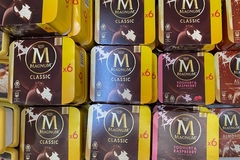
- Industry news
Industry news
- Category news
Category news
- Reports
- Key trends
- Multimedia
- Journal
- Events
- Suppliers
- Home
- Industry news
Industry news
- Category news
Category news
- Reports
- Key trends
- Multimedia
- Events
- Suppliers
Interpack live: Antares harnesses microwave tech to enhance contaminant detection and food safety

08 May 2023 --- Antares Vision Group is highlighting its Microwave technology for detecting foreign objects in F&B products to ensure food safety at Interpack 2023 in Dusseldorf, Germany.
The Microwave was jointly developed with Wavision, a start-up from the Polytechnic University of Turin, Italy. It uses microwave technology to detect foreign bodies in packaged products, which the company says can also be applied to industrial sectors.
Antares uses sensors that Wavision developed to design a range of innovative inspection machines to be used in the F&B industry. The company says that before the Microwave, foreign bodies could only be detected with X-rays and metal detectors.

On the first day of Interpack 2023, Antares held a conference on its Microwave technology with speaker Marco Ricci, Microwave specialist and R&D director at Antares. We spoke to Ricci about the technology and how it fills a gap in the market.
PackagingInsights is reporting live from Interpack at booth B83 in Hall 8A.
Detecting the undetectable
Antares states that X-rays and metal detectors are not always efficient when physical contaminants have a density similar to the product containing them or if they are too small to be detected.
“We’re proposing an anomaly detection principle, as common X-ray devices are about the detection principle based on the density contrast between the foreign object and the product inspected. This may lead to potential fails as many contaminants may be low density and hard to detect by those systems,” Ricci tells us.
 Antares features its Microwave technology to identify foreign objects in F&B items at Interpack 2023. Microwave technology can determine whether foreign bodies are present in creams, semi-liquids and liquids, especially concerning transparent physical contaminants. The machine can see plastic, glass, wood, bones, rubber, insects and all metals, regardless of size or composition.
Antares features its Microwave technology to identify foreign objects in F&B items at Interpack 2023. Microwave technology can determine whether foreign bodies are present in creams, semi-liquids and liquids, especially concerning transparent physical contaminants. The machine can see plastic, glass, wood, bones, rubber, insects and all metals, regardless of size or composition.
“With this new anomaly detection system based on dielectric contrast, at microwave frequency, we’re monitoring the variation of the electric field imposed by our sensing system that the presence of a foreign body might alter. We can see objects that are hard to be found by other devices. So proposing a new solution covering lacks and some of the needs in the market,” Ricci continues.
“We focused on low-density materials, which are the hardest for X-rays to detect, like plastic, glass and wood. Even metals with an infinite permittivity value can be detected and everything that gives the electric contrast with a product inspector.”
Minimizing health and safety threats
The inspection works through antennas placed around the container, which can penetrate the product in all its parts, detecting the presence of physical contaminants. Ricci says the research for the Microwave started from a worst-case scenario perspective to optimize food safety.
“Chocolate cream has a permittivity of around 3.2 against plastic, which is 2.9, so the contrast is quite low. If you consider any water-based product – spirits, wine, water itself or soda – these beverages have a permittivity value of around 80. So the contrast with plastic glasses is quite high, compared to the worst-case scenario that we studied,” he explains.
Antares developed the Microwave since physical contaminants in packaged products threaten consumers’ health and safety. Additionally, when impurities are present in F&B products, companies must deal with recalls, leading to substantial costs.
A Rapid Alert System for Food and Feed report in 2021 showed 4,607 alerts in Europe of contaminants in food products – 1,455 were deemed to pose a serious risk. Contaminants also damage the manufacturer’s reputation.
“We saw high interest in the market as there’s a need to cover the lacks. We did several studies about the impact of foreign body contamination that is still high, probably due to the lack of other inspection systems,” concludes Ricci.
By Sabine Waldeck










